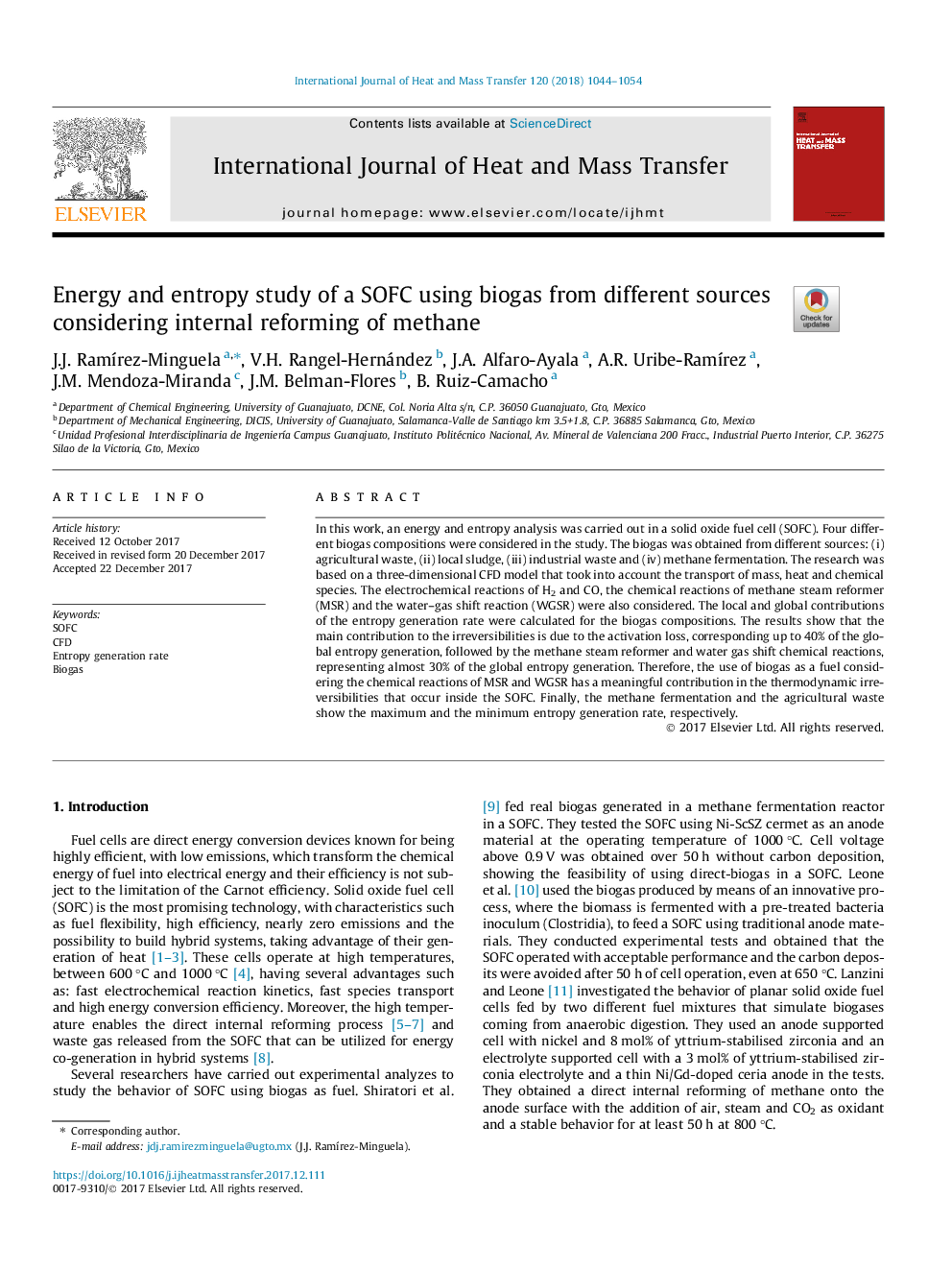| Article ID | Journal | Published Year | Pages | File Type |
|---|---|---|---|---|
| 7054713 | International Journal of Heat and Mass Transfer | 2018 | 11 Pages |
Abstract
In this work, an energy and entropy analysis was carried out in a solid oxide fuel cell (SOFC). Four different biogas compositions were considered in the study. The biogas was obtained from different sources: (i) agricultural waste, (ii) local sludge, (iii) industrial waste and (iv) methane fermentation. The research was based on a three-dimensional CFD model that took into account the transport of mass, heat and chemical species. The electrochemical reactions of H2 and CO, the chemical reactions of methane steam reformer (MSR) and the water-gas shift reaction (WGSR) were also considered. The local and global contributions of the entropy generation rate were calculated for the biogas compositions. The results show that the main contribution to the irreversibilities is due to the activation loss, corresponding up to 40% of the global entropy generation, followed by the methane steam reformer and water gas shift chemical reactions, representing almost 30% of the global entropy generation. Therefore, the use of biogas as a fuel considering the chemical reactions of MSR and WGSR has a meaningful contribution in the thermodynamic irreversibilities that occur inside the SOFC. Finally, the methane fermentation and the agricultural waste show the maximum and the minimum entropy generation rate, respectively.
Keywords
Related Topics
Physical Sciences and Engineering
Chemical Engineering
Fluid Flow and Transfer Processes
Authors
J.J. RamÃrez-Minguela, V.H. Rangel-Hernández, J.A. Alfaro-Ayala, A.R. Uribe-RamÃrez, J.M. Mendoza-Miranda, J.M. Belman-Flores, B. Ruiz-Camacho,
